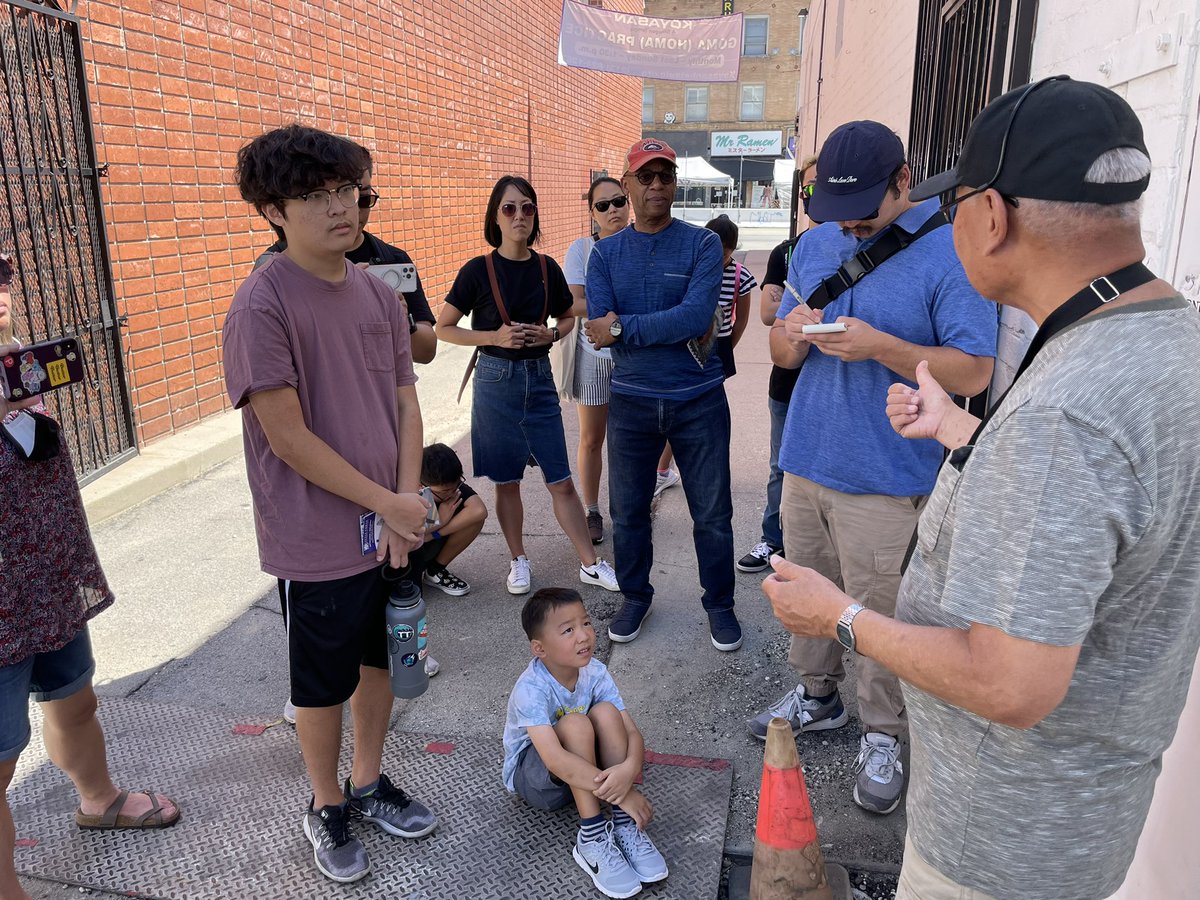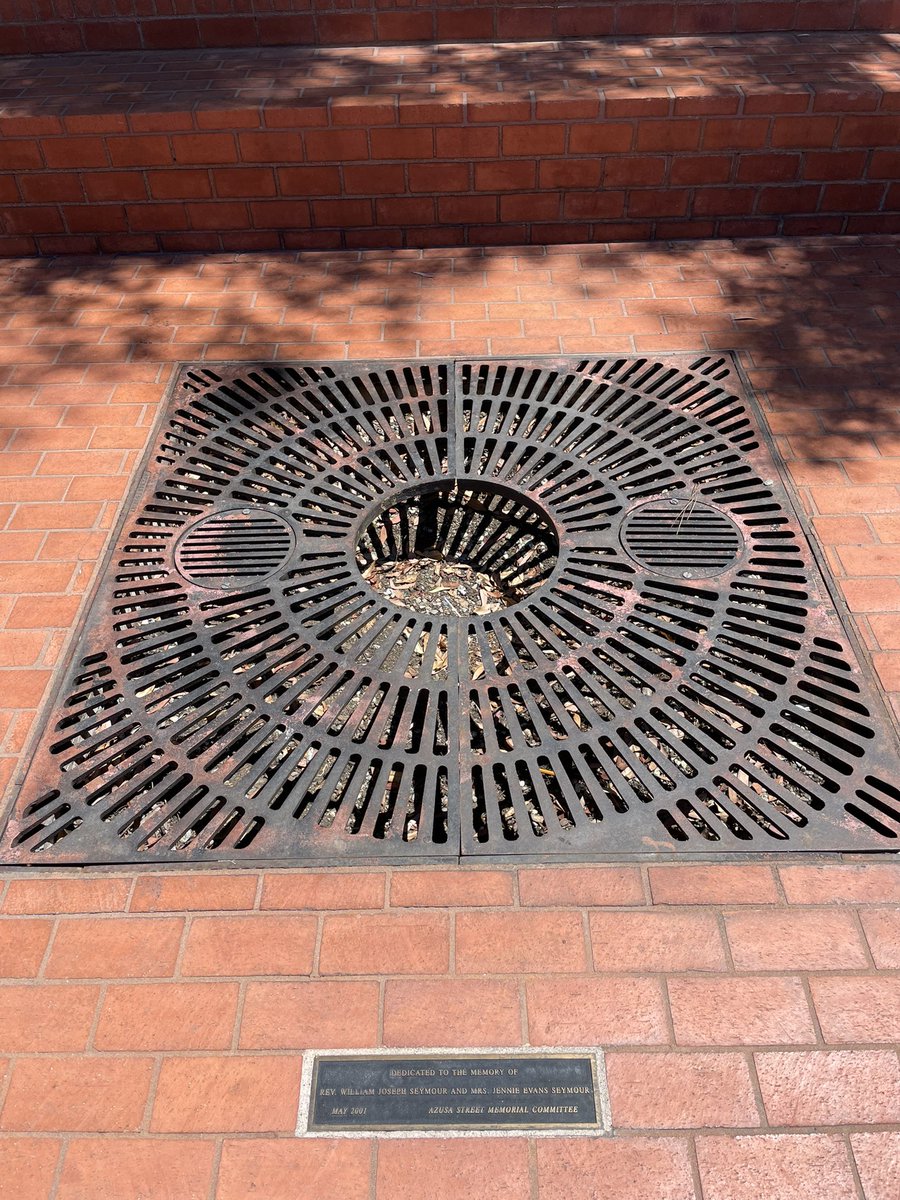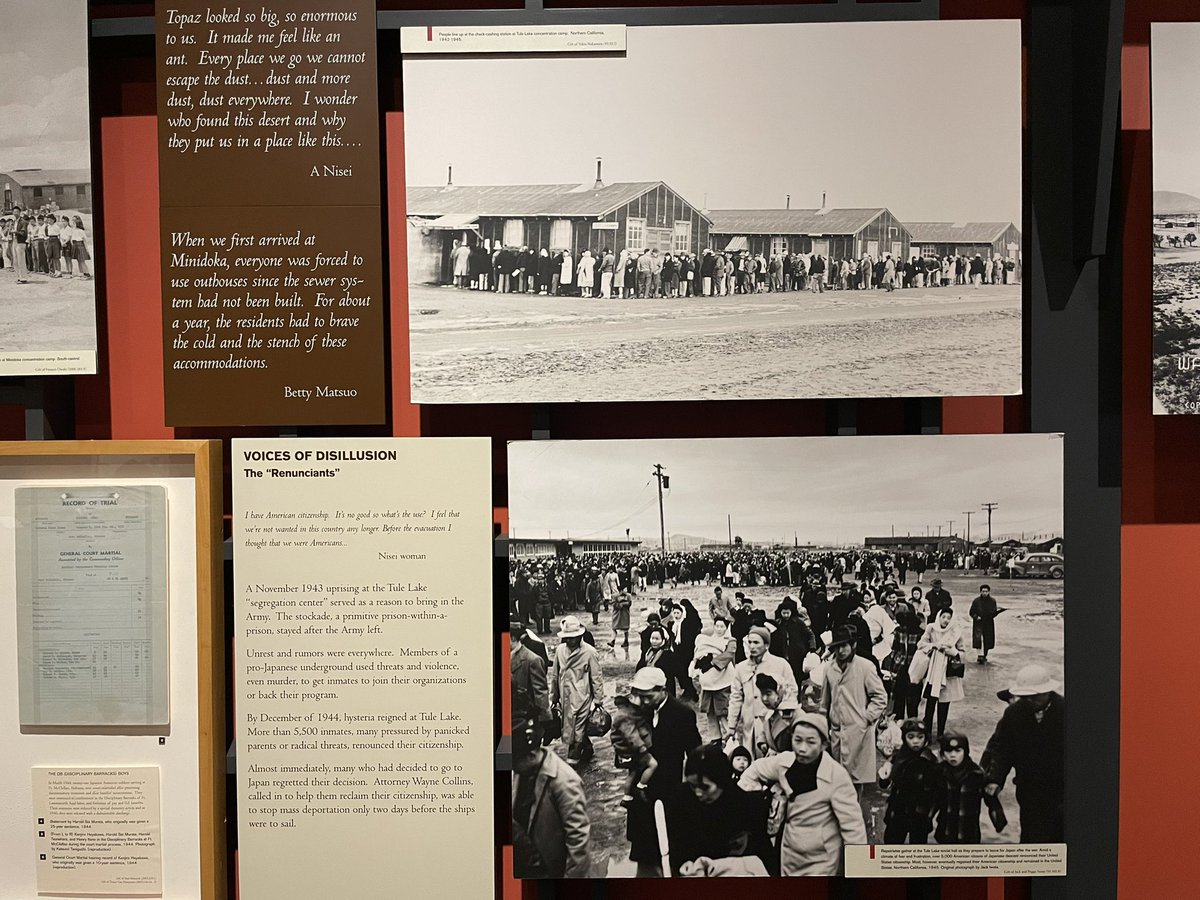
Day 2 of @aachristcollab #reclaimtrip:
Starting in Little Tokyo with Bill Watanabe, who is giving us a tour of some Japanese American history displayed here.
Here we are at the “Go for Broke” memorial.
Starting in Little Tokyo with Bill Watanabe, who is giving us a tour of some Japanese American history displayed here.
Here we are at the “Go for Broke” memorial.

When WW2 ended, there was a large debate among the Japanese American community as to whether they should create a memorial to honor the soldiers who had fought. Those who survived were torn, feeling like they shouldn’t erect a memorial to themselves as they were still alive. 

Others felt like they should erect a memorial because their story was unique, especially as many fought in the war while their families were incarcerated in mass because of widespread suspicion.
Bill Watanabe is taking us to school!
Bill Watanabe is taking us to school!

The @eastwestplayers theater was the historic Union Church. It is now one of the only Asian American theaters in the country.
It was named the Union church because three different congregations came together from three different denominations to form one congregation.
It was named the Union church because three different congregations came together from three different denominations to form one congregation.

There is a plaza (parking lot) named after Rev. Howard Toriumi, the senior pastor of Union church. He didn’t divorce social action from his Christian faith. Bill served on the Little Tokyo community council and suggested that the plaza be named after Toriumi. 

Bill (Yoshiyuki) was born in Manzanar. In his family, he had two members who was was “pro-Japan,” someone who was neutral, and someone who fought with the 442nd military unit.
Three months after he was born, his family was sent to Tule Lake with 15,000 others.
Three months after he was born, his family was sent to Tule Lake with 15,000 others.

Several Japanese Americans sought to purchase land in Boyle Heights, about 1 mile away from Little Tokyo. But the government stepped in and said Japanese couldn’t buy property in areas that weren’t designated for them.
The alien land law was overturned because of Sei Fuji.
The alien land law was overturned because of Sei Fuji.

Came back to the location of the Azusa Street Revival where I noticed the only tree that didn’t grow was dedicated to the Seymours.
Today, I learned that they had tried replanting the tree at least 5 times since 1990. Something’s going awry.
Today, I learned that they had tried replanting the tree at least 5 times since 1990. Something’s going awry.

Here with Dr. Emily Anderson, who curates at @jamuseum. She and another person curated an exhibit about the role of religion during the mass incarceration during WW2. 

The general pattern of Christianity that the Japanese observed after Christian missionaries entered into the country. Missionaries arrived, then the military arrives, then they go to war and if they lose, become colonized.
The Japanese resisted Christianity for this.
The Japanese resisted Christianity for this.
*Correction: it was formed by two congregational churches and one Presbyterian church.
Rev. Masahiko Wada created this hand carved wooden devotional panel with Psalm 121:1 while incarcerated at the Santa Fe Incarceration camp.
“I lift up my eyes to the hills-- where does my help come from? My help comes from the LORD, the Maker of heaven and earth...” Ps 121:1
“I lift up my eyes to the hills-- where does my help come from? My help comes from the LORD, the Maker of heaven and earth...” Ps 121:1

Bilingual Bibles with the translations handwritten and completed by Captain Masuo Kitaji in Poston concentration camp (black Bible) and at Gilroy Yamato Hot Springs (brown Bible).
The cover of the Bible with the black leather has 1 Cor. 1:18 on it.

The cover of the Bible with the black leather has 1 Cor. 1:18 on it.


Japanese Americans didn’t respond to the rising anti-Japanese hate and the orders to be incarcerated en masse the same way. There was a diversity of responses based on the hopelessness many felt. Here are four categories: cooperation, challenge, resistance, and disillusionment. 







When Japanese Americans were finally realized to not be a threat, they were released and many had lost EVERYTHING from being incarcerated. When they returned home (usually on the west coast), they weren’t usually welcome and everything had changed, so many moved elsewhere. 





With a deacon of Union Church, who put together a book outlining the history of the church.
She turned to 1942 & saw how the pages around the Japanese incarceration were blank with the words: This will be our last entry. We can no longer document beyond this point.
She turned to 1942 & saw how the pages around the Japanese incarceration were blank with the words: This will be our last entry. We can no longer document beyond this point.

This is the sanctuary of the Union Church, which is the oldest Japanese American Church in LA. It was established in 1918. They moved to this location from the East West Players theater in 1976 after the city of LA enacted imminent domain. 

• • •
Missing some Tweet in this thread? You can try to
force a refresh
















